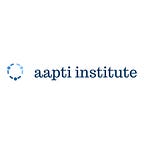India’s Community-led Crisis Response: How Can Bottom-up Data Governance Help?
By Suha Mohamed
This article was originally published in Business World on May 13th 2021
The lack of a cohesive government response in the latest wave of Covid-19 has forced citizens and civil society to fend for themselves. Citizens are acting as intermediaries, supporting others by pooling data and amplifying demands for oxygen, medication and hospital beds. This collective resilience is powered by the exchange of critical information, but has made the ability to collate, find and share verified data a key determinant in life or death situations.
To better sort through the high volume of requests and information, apps, websites or simple tools have been built to aggregate resources. Open source trackers are helping users log requirements, view compiled information, track beds and even identify opportunities to volunteer. Others are spreading awareness on how to generate more effective, customised search queries on Twitter.
Regardless of these efforts, most information is still scattered across platforms and mediums — reconciling details from images, texts and tweets is complex. Another growing challenge is the validity and relevance of this data. Several volunteers are manually verifying sources (and tagging as #verified) to ensure numbers are valid and that medical support is still available.
What also remains to be solved for, is how to protect our digital rights and privacy — a fundamental right. This is critical to address now, given that many people are openly broadcasting details like phone numbers, blood types, addresses, medical status and histories online to amplify needs and information. While this may be necessary to currently share, what happens when the crisis is over?
The exposure of personal, sensitive data on platforms is concerning as it could potentially be misused to further harass, surveil and censor citizens. Doctors, front-line workers and suppliers whose numbers are now in the public domain are inundated and burdened by calls. Twitter accounts sharing information on suppliers of oxygen and medicine have also recently been shut down or ‘shadow banned’. Past data breaches also point to the risk of this data being commodified and sold without consent to third-parties. Volunteers who recognize these risks advise blurring or hiding sensitive information before posting (or re-posting), however, this may not be a sustainable solution.
These are reminders that we need to retain agency and be active participants over our data journeys, especially in context of calamities. Citizens have largely taken control over relief and access efforts (albeit out of dire circumstance and necessity), and are witnessing the value of a bottom-up approach to crowdsourcing and sharing hyperlocal data. However, existing platforms/systems are ill-equipped for effective bottom-up data governance.
Bottom-up data governance systems can help put power and agency over data, its use and protection back in the hands of individuals and communities. This starts with recognizing that civil society organizations can play the role of emergency guardians or stewards of data. We already trust that many grassroots and community-based organizations possess a ‘duty of care’ to work in the best interests of those they serve, it’s time for this to translate to data and digital rights.
Lessons can be drawn from existing organizations on how this could work in practice. Digi.me streamlines user data from existing sources and facilitates consent in real-time. PolyPoly’s polyPod vault is similar but data decisions and the development of their technology take place through a cooperative — potentially well suited for a community-oriented solution. Swash has built plugins that capture and pool data from existing social media platforms to enable users to better derive value. In theory, easily embeddable tools like these could trawl for and aggregate data to strengthen matches between requests and resources, help visualise the proximity of nearby services and map and alert suppliers on aggregate demand.
Considering the growing technical divide, which renders those with digital literacy and networks the power and privilege to access support, data stewards can also serve as important bridges to connect the last-mile. Stewards can represent and surface requirements of those who have been invisibilized, and potentially negotiate on their behalf. The ongoing pandemic has made clear that crises have calamitous impacts on our data rights, and we need to create systems to become active participants in our data journeys — to protect and harness the value of our data. Bottom-up governance models are a step toward ensuring that these approaches remain community-oriented and can scale and help existing efforts be more effective.
